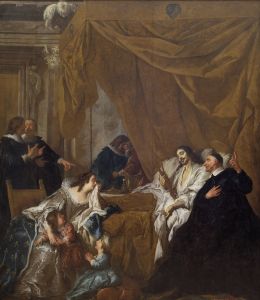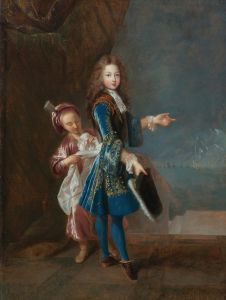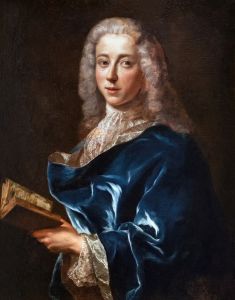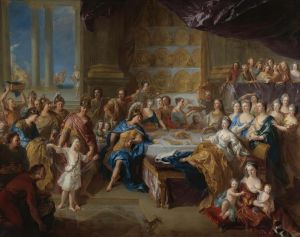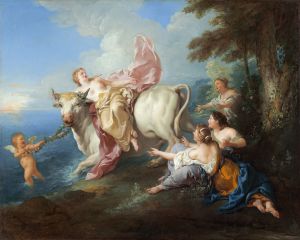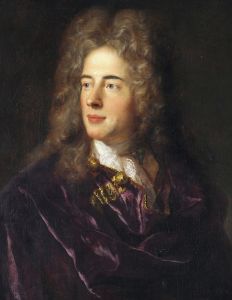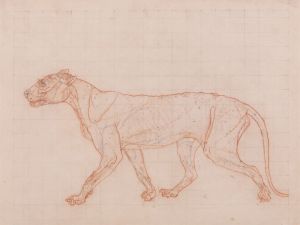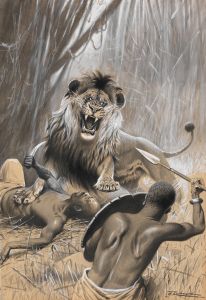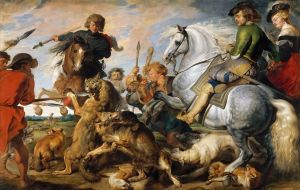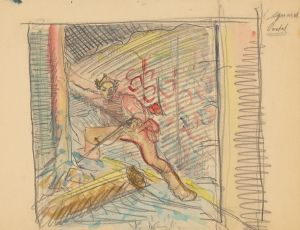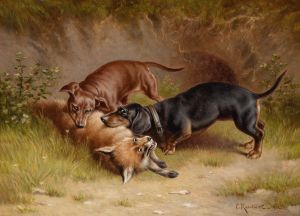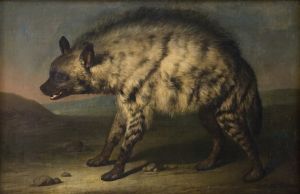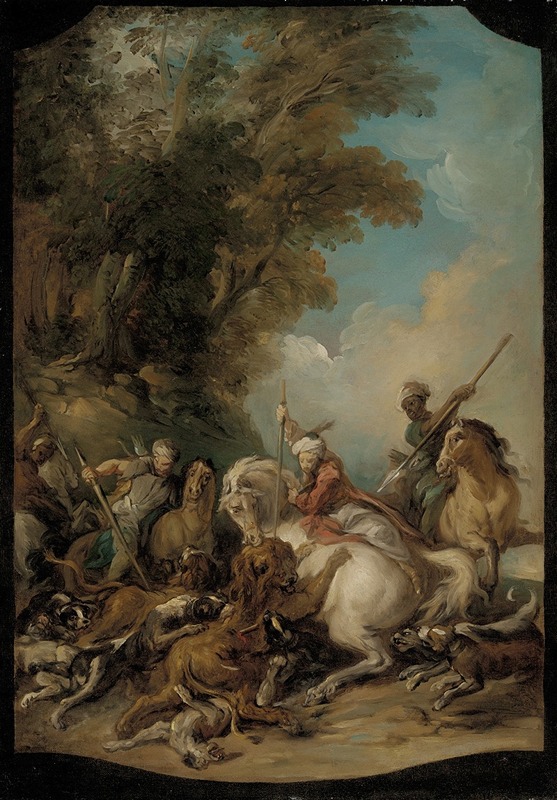
The Lion Hunt
A hand-painted replica of Jean-François de Troy’s masterpiece The Lion Hunt, meticulously crafted by professional artists to capture the true essence of the original. Each piece is created with museum-quality canvas and rare mineral pigments, carefully painted by experienced artists with delicate brushstrokes and rich, layered colors to perfectly recreate the texture of the original artwork. Unlike machine-printed reproductions, this hand-painted version brings the painting to life, infused with the artist’s emotions and skill in every stroke. Whether for personal collection or home decoration, it instantly elevates the artistic atmosphere of any space.
Jean-François de Troy was a prominent French Rococo painter known for his historical and genre scenes. Born in Paris in 1679, de Troy was the son of the painter François de Troy and was trained in the arts from a young age. He became a member of the Académie Royale de Peinture et de Sculpture in 1708 and was known for his ability to capture dynamic movement and vivid expressions in his works.
"The Lion Hunt" is one of de Troy's notable paintings, although specific details about this particular work are not extensively documented. De Troy's oeuvre often included scenes of historical and mythological significance, and he was adept at portraying dramatic narratives with a keen sense of composition and color. His works typically reflect the Rococo style, characterized by its ornate detail, lightness, and elegance, often with a playful or theatrical quality.
In "The Lion Hunt," de Troy likely employed his skills in depicting action and emotion, capturing the intensity and danger of a hunting scene. Such themes were popular in European art, as they allowed artists to explore human and animal forms in dynamic poses and to convey a sense of adventure and heroism. Hunting scenes also often served as allegories for human endeavors and struggles, adding layers of meaning to the visual spectacle.
De Troy's technique would have involved careful planning and execution, with attention to the interplay of light and shadow to enhance the drama of the scene. His use of color would have been both vibrant and harmonious, contributing to the overall impact of the painting. The composition would likely have been carefully balanced to guide the viewer's eye through the narrative, highlighting key figures and actions.
While specific information about "The Lion Hunt" by Jean-François de Troy is limited, it can be inferred that the painting aligns with his broader body of work, which often celebrated movement, emotion, and the beauty of the natural world. De Troy's paintings were well-regarded in his time, and he received numerous commissions from both private patrons and the French court. His ability to blend classical themes with the decorative flair of the Rococo style made his work appealing to a wide audience.
Jean-François de Troy continued to be an influential figure in the art world until his death in 1752. His legacy includes not only his paintings but also his contributions to the development of the Rococo style in France. Although "The Lion Hunt" may not be as widely recognized as some of his other works, it remains a testament to his skill and artistic vision.





